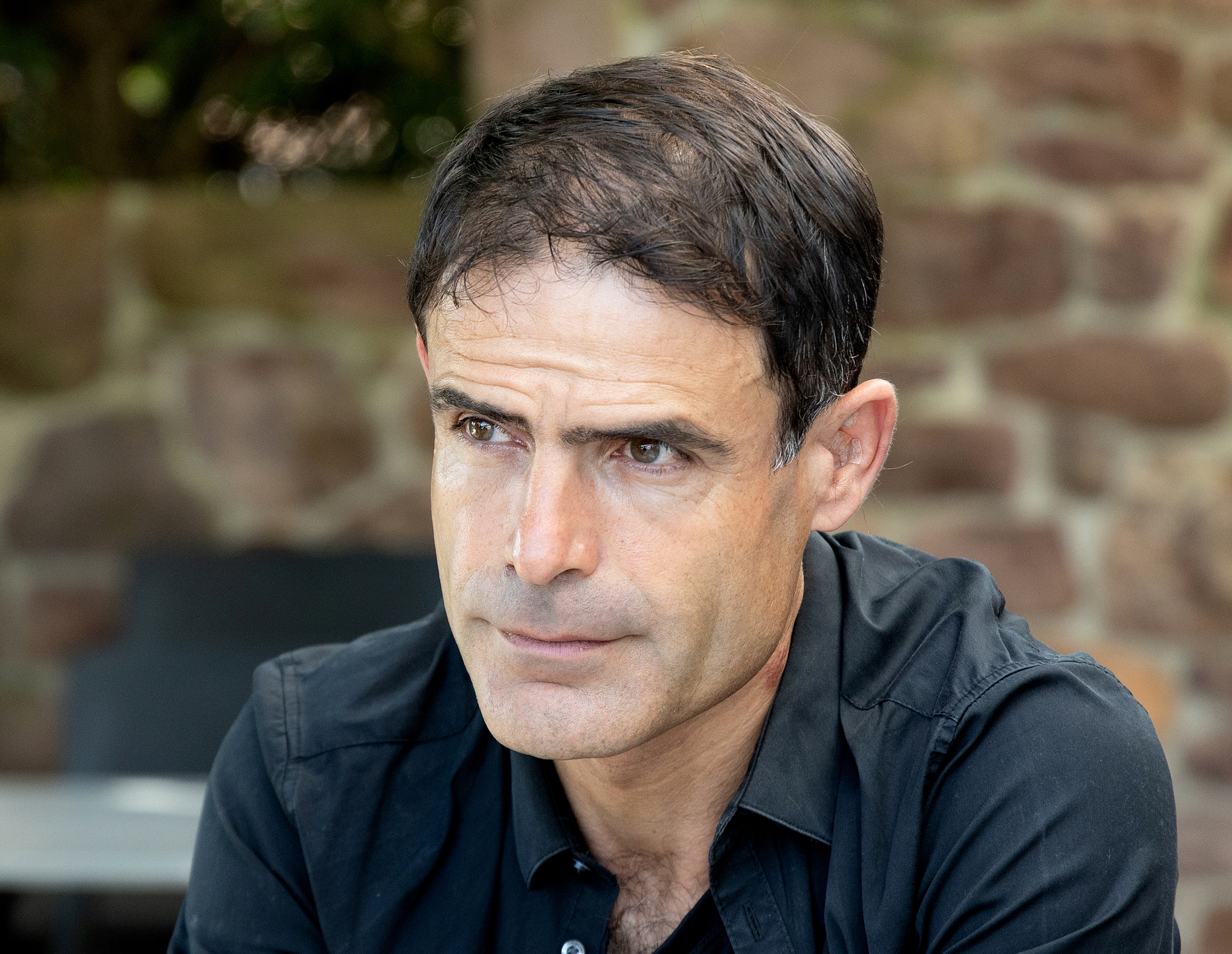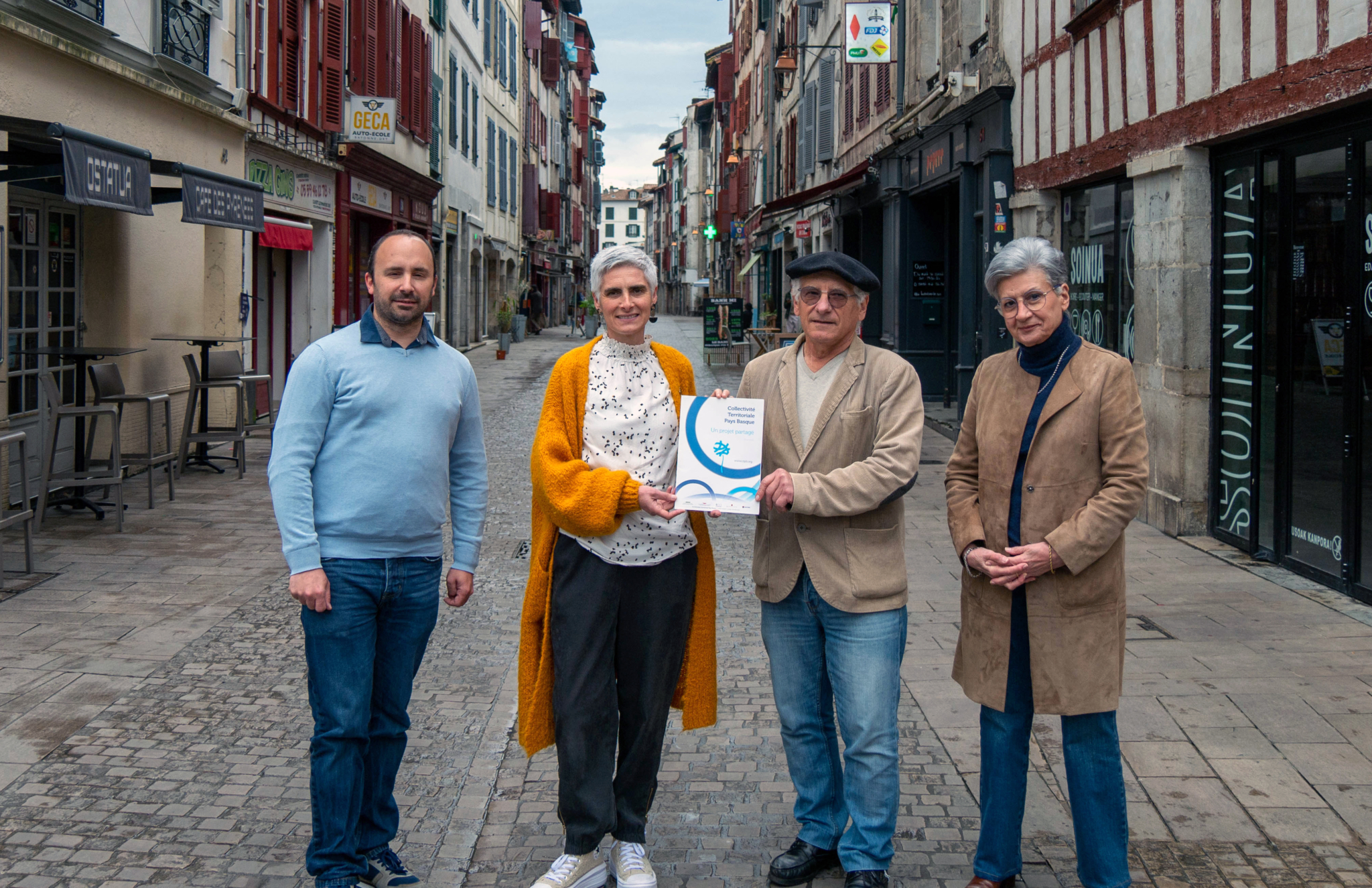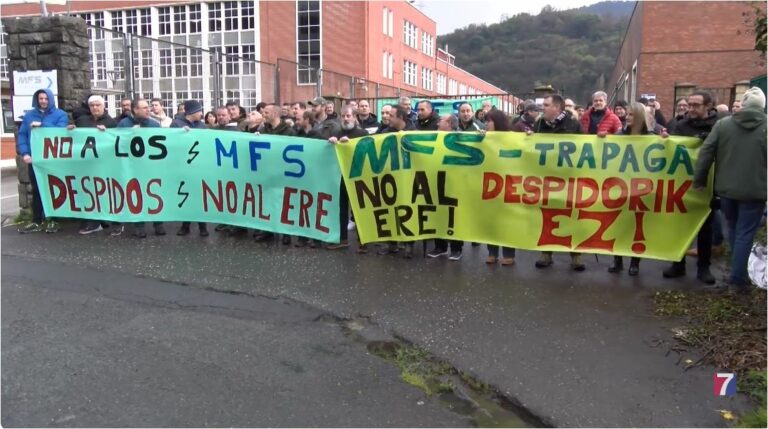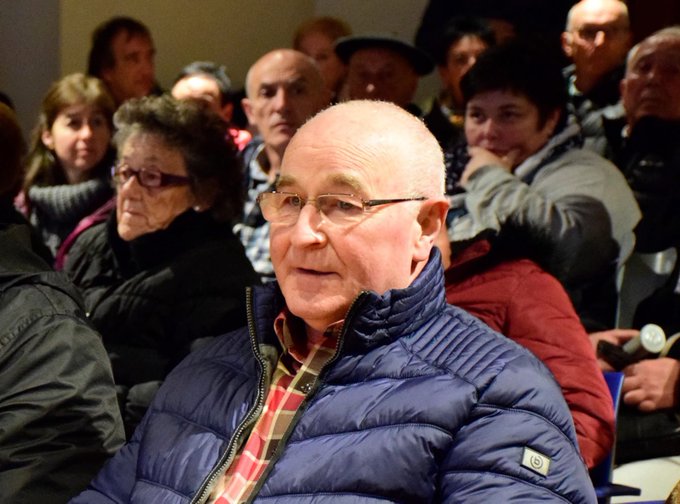Society
Environment
Politics
Economy
Culture
Basque language
Feminism
Education
International
Opinion
tuesday 08 april 2025
Automatically translated from Basque, translation may contain errors. More information here. 
Wood of the poor
The world of bamboo is huge and hijacks all my delights. Bamboos are herbs. Big herbs, but grass. A variety of genera and species are called bamboo. The characteristic that unites them is the formation of the hard cane. And this cane has given the bamboo diffusion. For ground support, bridges, canals, enclosures, fences, parks, poultry houses, cages, stairs, buildings, houses... Why not use bamboo? It's called poor wood in Colombia. It is used in small pieces to make East Asian style food chopsticks and, which is seen more and more in this last period, for flooring boards.
Construction is the future of bamboo. Bamboo allows the construction of scaffolding structures that would otherwise be almost impossible: it is poor in load, strength, easy and cheap to transport and handle. It is the scaffold of the most modern constructions, but also part of them. It is increasingly used to have the structure of the building itself. The bamboo is perfect from an ecological point of view. A beautiful local resource. On the other hand, it provides extraordinary possibilities for creation, and you will find it everywhere in artistic construction as in artistic buildings. See, for example, the works of the Starn architectural brothers (www.starnstudio.com).
Barely bamboo, it’s been a few years since it was brought to us, but the cane, Arundo donax, we use it here with guilt. For shelters, walls of houses, closures, wind barriers, etc., and especially for sticks in parades or fields and orchards. He was a friend of the farmer. His need involved cutting the cane annually, with growth in some way under control. The abandonment of the cane and the use of plastic nets and iron pardas for field work has brought peace to the cane field. The possibility of unlimited dissemination.
Construction is the future of bamboo. Bamboo allows the construction of scaffolding structures that would otherwise be almost impossible: it is poor in load, strength, easy and cheap to transport and handle. It is the scaffold of the most modern constructions, but also part of them. It is increasingly used to have the structure of the building itself. The bamboo is perfect from an ecological point of view. A beautiful local resource. On the other hand, it provides extraordinary possibilities for creation, and you will find it everywhere in artistic construction as in artistic buildings. See, for example, the works of the Starn architectural brothers (www.starnstudio.com).
Barely bamboo, it’s been a few years since it was brought to us, but the cane, Arundo donax, we use it here with guilt. For shelters, walls of houses, closures, wind barriers, etc., and especially for sticks in parades or fields and orchards. He was a friend of the farmer. His need involved cutting the cane annually, with growth in some way under control. The abandonment of the cane and the use of plastic nets and iron pardas for field work has brought peace to the cane field. The possibility of unlimited dissemination.
Most read
Using Matomo
#1
Arantza Iruretagoiena Quintanilla
|
Iraitz Elordi Etxaniz
#2
Gorka Bereziartua
#3
Zigor Olabarria Oleaga
#4
Mikel Garcia
Newest
2025-04-08
Euskal Irratiak
Manex Fuchs
“Aberri Egunak euskaldun guztiak biltzeko ospakizuna izan beharko luke”
Aberri Eguna elkarrekin ospatzeko xedez sortu zen Euskal Herria Batera plataforma. Aurten, ikusgarri bat eskainiko dute apirilaren 11n, Manex Fuchs antzerkilariaren, Lorea Agirre idazlearen eta Martxel Rodriguez dantzariaren eskutik.
2025-04-08
Enbata
Together, towards the General Conference of Regeneration
On Friday, April 4, the Batu platform presented the launch of a dynamic of citizen mobilization, proving that the Basque Country needs an institutional evolution towards a Territorial Collectivity. The meeting is held on Saturday, May 10, at the Ezpeleta, during the lunch of a... [+]
2025-04-08
Gedar
Tomorrow the workers of the MFS of Trapagaran will go on an indefinite strike
The company management plans to close the factory and dismiss 106 workers, and the consultation period on labor regulation is open.
2025-04-08
Unai Lomana Uribezubia
FIFA is asked to revoke San Sebastian’s host designation at the 2030 World Cup
The venues of the World Cup in Spain, Morocco and Portugal were announced in December. Bilbao and San Sebastian were on the list. Six neighborhood associations in San Sebastian have, by letter, asked FIFA to reject the city’s designation of residence; FIFA itself speaks of the... [+]
2025-04-07
ARGIA
He regrets that Father Mari did not allow the 108 rescuers to be transferred to a nearby port
108 people have been rescued over the weekend in the Mediterranean. The Italian Government has not allowed them to disembark in a nearby port and the Aita Mari has been redirected to Salerno. It is likely to be the last mission before the European Union tightens its immigration... [+]
2025-04-07
Eneko Imaz Galparsoro
The death of Loren Arkotxa, former mayor of Ondarro and first president of the City Council
He was one of the founders of the City Council, which was founded in 1999, and was elected as the first president of the organization in the same year. He served as mayor for three years, and the city council announced the news.
Reply to Mikel Otero
It’s been two weeks since we once again showed macro-projects a clear opposition in the streets. Thousands and thousands of people took to the streets to proclaim that this destructive dynamic must end. Well, it seems that this has not had any effect on the politicians in... [+]
2025-04-07
Unai Lomana Uribezubia
June marks the 20th anniversary of the Hendaye Football Solidarity Tournament for Political Prisoners
The twentieth edition will be held on June 14 and will be packed with football matches, lunches and concerts. The day will be celebrated under the motto of solidarity with prisoners for 20 years, and "special" actions have been announced.
2025-04-07
Eneko Imaz Galparsoro
Asian and European stock markets suffer historic losses due to Trump’s trade war
Asia Hong Kong has suffered the greatest losses: It has lost 13.2%, the biggest blow it has suffered since 1997. In Europe, on the other hand, the main stock exchanges have started Monday with losses of between 6% and 10%. Mobilizations have been held in the largest cities in... [+]
2025-04-07
ARGIA
Hundreds of Basques demand justice in Bayonne
A demonstration was held in Bayonne on 6 April. They demand justice for Euskera and the Basques and proclaim the Republic of Euskera. On the 11th, two members of the EHE will be tried for an act of disobedience in the court of Bayonne.
Thousands against the housing business in San Sebastian
Called by the Socialist Housing Union of the Basque Country, thousands of people gathered today at noon in San Sebastián “against the housing business” and “for the universal right to housing”.
2025-04-07
Ahotsa.info
Workers and pensioners from the South Basque Country take to the streets to demand minimum wages and pensions that guarantee decent living conditions
The demonstrations organized by the Pensioners’ Movement of the Basque Country and sponsored by ELA, LAB, ESK, CGT, CNT, STEILAS, ETXALDE and TRES took place in Bilbao, Vitoria, San Sebastián and Pamplona. It calls on the governments of the Basque Country and Navarre to make... [+]
2025-04-07
Zigor Olabarria Oleaga
The occupied space of Korda in Vitoria-Gasteiz is reported to be in danger of eviction
Dozens of neighbors have expressed their support for the project on Sunday. The place in the Old Town is owned by the City Council and has been occupied by several agents in collaboration for three years.
2025-04-07
Unai Lomana Uribezubia
"He shot me face to face, pointed at my testicles, less than 30 meters away."
A 33-year-old resident who has lost his testicle due to a shell from the Basque Country talks about what happened during the evacuation of the Etxarri II youth centre in Bilbao. He was there with other neighbors, in solidarity with the members of the youth center, "peacefully".
Eguneraketa berriak daude























